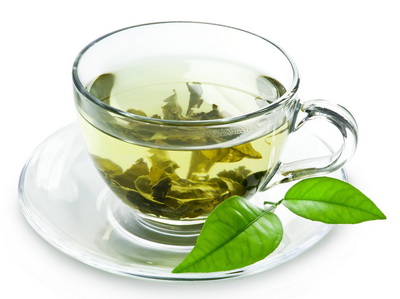Camellia sinensis – Green tea as the Anticancer drug and powerfull antioxidant
Green tea can neutralise carcogenic agents such as nitrosamine and aphlatoxine present in the intestine, in the liver and in the lungs, and can impede the activation of carcinogens
 There is a large bibliography on this plant Green tea – Camellia sinensis, known in China since ancient times.
There is a large bibliography on this plant Green tea – Camellia sinensis, known in China since ancient times.
Basically we get a dry extract from this plant which is used as an infusion: decaffeinated green tea (less than 0.02% caffeine), with a high content of polyphenols titrated in EGCG (EpiGallo-Catechin-Gallate); heavy metals present in irrelevant quantities (As<0.5 ppm, Pb<0.8 ppm, Cd<0.1 ppm, Hg <0.55 ppm).
The principle action of green tea can be attributed to the polyphenolic catechins, powerful antioxidants that neutralize free radicals.
The catechins contained in tea can neutralise carcogenic agents such as nitrosamine and aphlatoxine present in the intestine, in the liver and in the lungs, and can impede the activation of carcinogens.
Studies on EGCG, as can be inferred from the bibliography reported, have basically shown:
a) Anti-oxidant activity and scavenging of the free radicals (similar to vitamin C and E)
b) Stimulation of the detoxification systems, selective induction and modification of the metabolic enzymes, with a consequent greater formation and excretion of metabolites, the result of a detoxification process of the organism by oncogenic agents.
c) Inhibition of the factors that activate and develop the tumor, reducing the cellular repetition rate.
d) Ability to induce selective apoptosis for the neoplastic cells alone; the latter has so far been proved, in man, in acute myeloid leukaemia (1186), skin cancer cells and in prostate carcinomas.
e) Ability to stop abnormal cellular growth, acting at the level of growth receptor factors, as has been shown up to now in skin cancers; in this case it seems as if the EGCG block the transduction signal paths associated to growth factors.
f) Inhibitor of gelatinase , responsible for angiogenesis.
g) Inhibitor of telomerasis.
It is a platelet anti-aggregator: as such, its action manifests itself by inhibiting the formation of Thromboxane A2 (with a mechanism similar to that of Aspirin) and of another aggregating agent called PAF (Platelet Activating Factor).
This is because Thromboxane is also the cause of a reduction in the vascular spaces of the arteries, the inhibition of this can forestall ischemic phenomena at cardiac level.
It performs a protective action for the kidneys, and in particular suppresses the production of methyl-Guanidine (a uremic toxin).
N.B.: Green tea must not be fermented; boil it for no more than 3-5 minutes. Take it early in the morning; it can be drunk in the afternoon too, but not after the early afternoon (15.00-16.00 p.m.).
Source: The book Thousand Plants against Cancer without Chemo-Therapy, author Giuseppe Nacci, M.D
